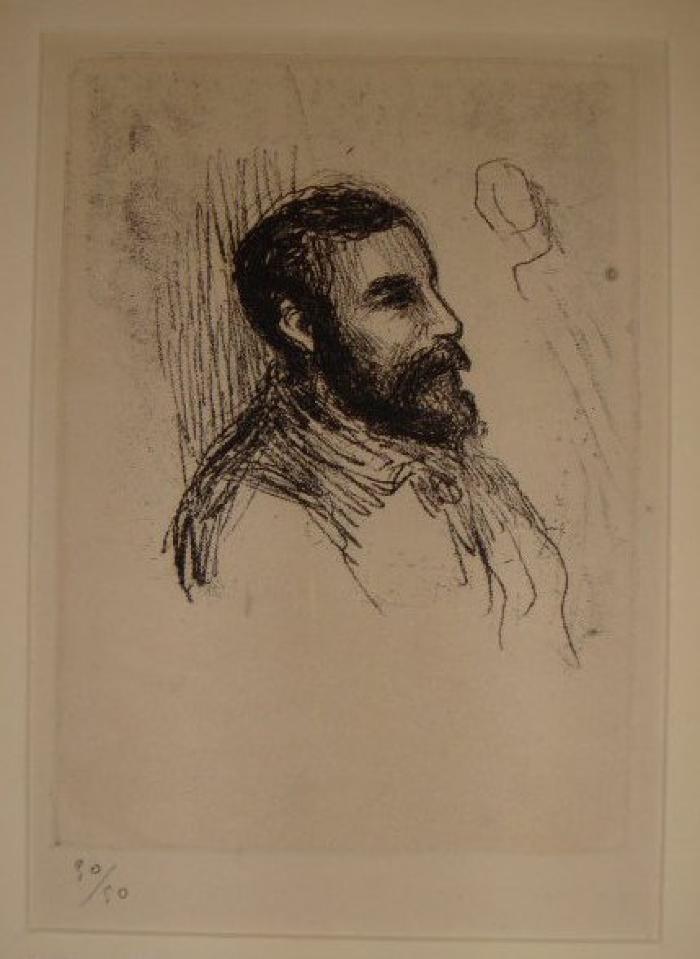71.1.6
Portrait of the Engraver Roux-Champion
1900 – 1910 (Date created)
Ink
Etching;Aquatint;Softground etching
Prints
9.25 in W x 12 in H(Paper)
French
Portait of the French printmaker Victor Joseph Roux-Champion (1871-1953). Editeur Sagot, Paris.
Roux-Champion turns his head giving his portraitist and viewers a stark profile of his long face. The etching ap-pears unfinished. The sitter's coat is not much more than an outline, and the background is composed of just a few marks. Roux-Champion's detailed profile contrasts profoundly with the rest of the drawing.
French Impressionist artists often worked side by side. Therefore, it was not unusual for artists to include one another in each other's work. Renoir is best known for his colorful paintings, but here is an etching of the mas-ter. What might Renoir have tried to convey about his subject through an etched rather than a painted portrait of his contemporary? It might have been an economic decision (as paintings were more expensive to produce) or the fact that Roux-Champion was an engraver. Perhaps he felt simply that this medium most powerfully conveyed the identity of his subject.
-from exhibition label for Face Value (fall 2012)
French Impressionist artists often worked side by side. Therefore, it was not unusual for artists to include one another in each other's work. Renoir is best known for his colorful paintings, but here is an etching of the mas-ter. What might Renoir have tried to convey about his subject through an etched rather than a painted portrait of his contemporary? It might have been an economic decision (as paintings were more expensive to produce) or the fact that Roux-Champion was an engraver. Perhaps he felt simply that this medium most powerfully conveyed the identity of his subject.
-from exhibition label for Face Value (fall 2012)
In Collection
Ex. Coll.: ? ed. Sagot, editeur, Paris, (embossed BR)
Delteil 20; Stella 20
Please note that cataloging is ongoing and that some information may not be complete.
